Why Does Your Paint Bubble, Crack and Peel Off the Walls? (How to Fix & Prevent It)
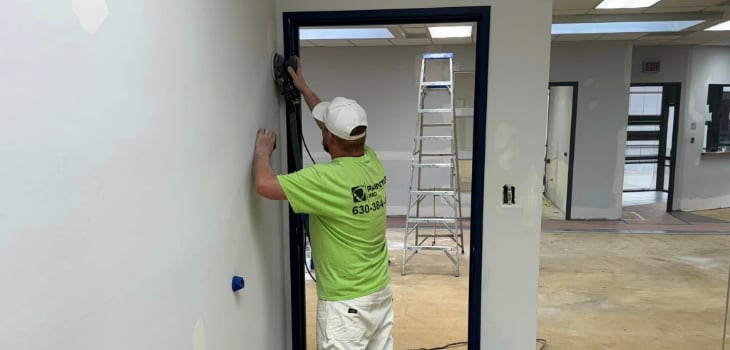
Paint from quality manufacturers is more durable than ever, but is it indestructible? Not quite. While its aesthetic appeal will last for years and years, eventually the paint will break down, crack and peel. Not only will that attractive appeal have gone away, but so too will its protective qualities. This means moisture will be allowed to seep in and cause damage, and ultraviolet rays will directly impact materials the paint was once protecting.
Age isn’t the only factor – there are many, many causes for cracked and peeling paint, including environmental factors, how it was applied and the quality of the paint. While there is no way to make paint last forever, there are ways to prevent early failure and ensure that your paint will look great and protect your surfaces for a long time. We’ve compiled the following information that will fill you in on all the reasons for paint bubbling, paint cracking and why paint peeling occurs, as well as how to prevent it from happening.
Check out the following to figure out which is best for you:
- What is the difference between bubbling, cracking, and peeling paint?
- Common reasons why your paint cracks, peels, or bubbles
- Bubbling of paint on walls
- Cracking paint
- Peeling paint on walls
- General tips for fixing bubbling, peeling paint and cracks in walls before painting
- How to prevent paint bubbles, peeling and cracks
- Work with professional painting contractor in the Chicago area
What Is the difference between bubbling, cracking and peeling paint?
From paint bubbling on a wall to cracks in paint on a wall to paint peeling on a wall, there are many ways and areas in which paint fails. But is there really a difference between bubbling, cracking and peeling? While the end result is almost always the same (new paint replaces old paint), there are some differences to make note of.
For example, cracking paint, which can appear as small fissures on the surface of the paint, is a sign that the paint is no longer properly adhering to the surface on which it was applied. The cracks usually indicate the very beginning of failure.
The next step is for the paint to bubble, which means the moisture that the paint did such a great job of keeping out for so long is finally working its way under the paint, creating blisters. Peeling is the final step in the process of paint failure, which means the paint completely separates from the surface and falls off, either in small chips or flakes off in larger chunks.
Common reasons why paint cracks, peels, or bubbles
You might ask, “why is my paint bubbling” or “why is my wall paint peeling?” Those are good questions because the more you know about why it fails, the better prepared you will be to prevent it from happening. Time is definitely the biggest enemy of paint, and there is no turning back time, but there are other factors that come into play that can be addressed early on to prevent big problems later.
From a wall in a residence to a wall in a commercial property, experts can help to diagnose a problem and find the root cause. After many years of working in the industry, paint experts have dialed in on their understanding of reasons why paint cracks, peels or bubbles and they are a wealth of information, providing insights that can help a newly painted surface remain in outstanding condition for years and years.
Bubbling of paint on walls
Bubbling of paint on walls is hardly an attractive feature. In fact, it’s a sign that the walls are in real need of repainting. Usually, bubbling paint forms as various-sized blisters, lifting areas of the paint off the surface. It’s a rather unsightly imperfection that not only looks bad, but also means that the structural integrity is compromised.
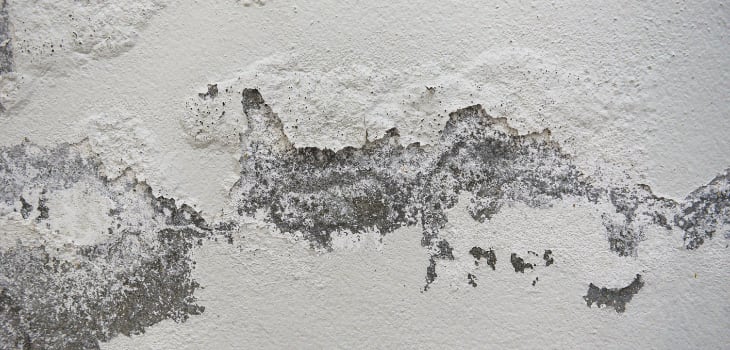
Unfortunately, paint bubbling is a common problem and there are many different reasons why it happens. It underscores the significance of using high-quality materials and employing precise application techniques in painting projects to ensure the longevity and aesthetics of the finished result.
Bringing in an expert will help you answer the question, “why is my paint bubbling?” Rest assured, when the answer is revealed, you can avoid having to deal with the issue following your repainting project and you can enjoy the new look of your painted surfaces.
Why does paint bubble?
You see bubbles on the wall after painting and you’re naturally curious, wondering why does paint bubble? The answer to what causes paint bubbles is most often a lack of surface preparation prior to painting. This can lead to paint bubbling soon after the job is finished, or it can take years to begin to lift from the surface and create blisters.
Surfaces must be completely clean and free of contaminants prior to paint being applied. This is why painters are so careful in their prep work prior to laying down that first coat of paint. Also, professional painters are careful to paint in the right atmospheric conditions, as excessively hot days or excessively humid conditions can also lead to bubbling paint.
Another reason paint bubbles is because of a bad reaction to the type of older paint the new paint is applied to. For example, when working with oil-based paint, professionals know not to apply it over latex paint, as this can cause bubbling. The same is true of alkyd paint – it should also never be applied over latex paint.
10 common reasons that paint bubbles on walls
Inadequate surface preparation
All surfaces should be properly cleaned and dried prior to painting, as anything less than that will create poor adhesion that leads to bubbling.
Painting on damp surfaces
Surfaces need to be completely dry after they are cleaned or the paint will fail to adhere properly. Furthermore, painting on humid days can also create a problem that leads to bubbles.
Applying thick coats of paint
Professional painters avoid applying thick coats, as they know they will not dry correctly, which will lead to bubble formations.
Using contaminated or old paint
Paint breaks down as it ages in a can, leading to a lack of proper adhesion and drying. Furthermore, paint that has been contaminated with any other type of material will also fail to adhere and dry correctly.
Incompatible paint layers
When painting over latex paint, it’s advised to only use another latex paint, as oil or alkyd paint will not adhere properly and will bubble.
Underlying surface issues
Part of the prep work that goes into a paint job is checking the surface quality and making fixes before paint is applied. From dirt to moisture, cracks to flaking surfaces, all imperfections must be fixed first.
Chemical reactions
New paint will react to various chemicals when it comes into contact with it. Whether it’s old paint or some type of chemical in the substrate, new paint will react and lead to bubbles.
Moisture
From high humidity to a freshly cleaned surface that wasn’t allowed to dry thoroughly before new paint was applied, moisture is a leading cause of paint bubbling.
Excessive moisture in substrates
Wood takes about one year per inch of thickness to properly dry, which means moisture in the substrate of wood can still be present and cause paint to bubble.
Extreme temperatures
Painters are careful not to paint in extreme temperatures, as this will impact the drying time of paint in a negative way and lead to bubbling. From scorching hot to bitter cold, painters know to avoid painting in these extremes.
Having a professional assess your situation is highly recommended, as they will help you avoid the common problems that lead to paint bubbles on your surfaces.
How to fix bubbling paint?
Looking for clues on how to fix bubbling paint? If so, you’ve likely noticed surfaces that have already shown signs of blistering, or you are preparing for a painting project and you want to avoid having to fix bubbling paint on your walls. In any case, doing what you can to remedy a situation that essentially ruins the smooth aesthetic of your painted surfaces is a good move.
Follow each step in the tips below and you will not only remedy your current issue, but you will also prevent it from happening again. When you want your walls to be smooth and blemish free or a long, long time, take the following advice from painting professionals with years of experience.
Fixing bubbling paint:
Identify the cause of paint bubbling
Was it contaminated paint or substrate? Was moisture the cause or was it heat? Perhaps two different types of paint, one on top of the other that caused the bubbling?
Scrape and sand
Be careful not to damage the substrate while scraping or sanding away the bubbling paint. Try to leave the surface as smooth as possible.
Prime the area
Professional painters rely on high-quality primer to ensure long-lasting results.
Repaint the walls
Use high-quality paint from a trusted brand and apply as many coats as necessary to achieve the desired finish.
Cracking paint
One of the problematic issues impacting the appearance and protective qualities of paint is paint cracking. If you’re wondering, “why is my paint cracking?” You've got a lot in common with many homeowners and commercial property managers who have to deal with this situation and are also curious about the causes.
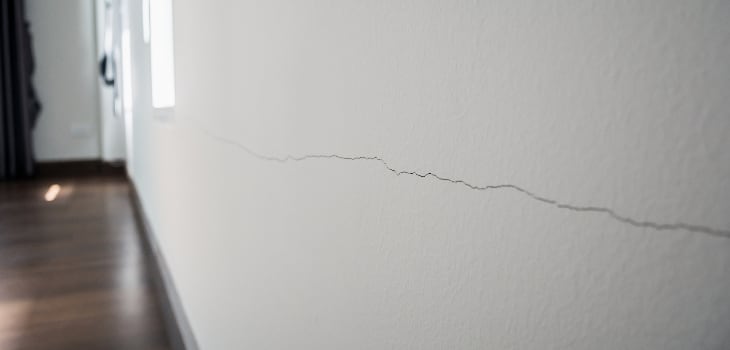
From a crack in the paint on a wall to prevalent cracks throughout the surface area of any painted structure, the substrate is now vulnerable to moisture damage, so it's more than just an appearance problem. Addressing the cracks begins with discovering how they initially occurred and taking steps to ensure they don’t happen again. With the advice of a professional painting contractor, you can get to the bottom of your paint flaws.
Why does paint crack?
As you might have guessed, the age of the paint is the top consideration for its cracking. But that’s not the only reason paint fails. When a customer asks, “why does paint crack on walls?” Most skilled contractors will point to various moisture issues. Another reason for cracking is if the paint was applied on top of a dissimilar type of paint, such as oil or alkyd paint on top of latex paint.
Nine times out of 10, the originating issue is the application of the paint, which could have been years ago. Did the paint dry improperly? Extreme heat, cold and humidity can impact the way paint dries and lead to cracking. Was the surface poorly prepared prior to the paint being applied? This too will lead to improper adhesion and cracking. Was the original paint of low quality, contaminated or old? These are all some of the top reasons paint will crack and if you can avoid these, you can prevent your paint from cracking anytime soon.
10 common reasons that can cause paint cracks on walls
Poor surface preparation
All surfaces need to be properly cleaned and cleared of debris prior to the paint being applied. Skip this important step and you’re likely to see your paint crack.
Low-quality paint
Only work with trusted brands producing high-quality paint. Bargain brands offer paints that lack flexibility, adhesion and ultimately, durability.
Applying paint too thinly
From applying coats that are too thin to failing to apply the right amount of coats, these are coverage issues that will lead to the paint failing and cracking.
Using old or brittle paint
Expired paint needs to be avoided at all costs, as it is brittle and easily cracks, particularly in environments that are prone to extreme temperature fluctuations.
Over-thick application
While spreading paint too thin is a problem, so too is going too thick with your application. Thick coats do not dry properly, leading to adhesion issues and cracking.
Incompatible paint layers
Avoid painting over old paint with a dissimilar type. For example, don’t use oil paint or alkyd paint on top of old latex paint, as this incompatibility issue will lead to cracking.
Incorrect application techniques
The work of a novice painter is noticeable because of improper techniques and tools being used. Not only does it look sloppy, but it can also negatively impact the life of the paint.
Temperature fluctuations
Professional painters will avoid working in extreme situations, such as hot or cold temperatures. These environmental issues impact the rate at which paint dries, which can lead to cracking.
Excessive humidity or dry conditions
When the air is too arid or too humid, paint fails to cure as it is intended to. This improper drying/curing leads to cracks in the paint.
Structural movement
All structures need to be secured so they don’t shift. Any settling, shifting or expansion will lead to surface areas being impacted and the paint will crack.
While there are many causes of paint cracking, avoiding this situation is as easy as ensuring that the necessary prep work is carried out, and that the right paint, tools and techniques are used.
How to fix cracking paint?
One of the more common issues painting contractors run into is cracked paint. Fortunately, knowing how to fix cracking paint is one of their specialties, so when you partner with the right painter, you’ll be covered. And it is important to address, because fixing cracked paint will prevent damage to your substrate.
Cracks can range from barely noticeable fine lines to large blemishes that appear to be on the verge of peeling. Hopefully, you’ll have figured out why the cracking happened and prevent that from being an issue again.
There are important steps to follow in dealing with cracked paint, from safely removing it to repairing surfaces to priming and repainting the walls. The best painting contractors follow these steps to deal with cracked paint.
Fixing cracked paint
Scrape away loose paint
Safely scrape off loose/cracked paint, being careful not to damage the bare surface.
Fill the crack
Fill all damaged surfaces with caulk or putty and allow them to fully dry.
Sand smooth
Use the proper grit of sandpaper and smooth out all the edges so the surface is level.
Prime and paint the walls
Choose a suitable primer – one that pairs well with your paint. Once dry, paint over the primer with as many coats as necessary.
Peeling paint on walls
When the paint is peeling off the wall, you know you’ve got a serious problem that needs immediate attention. Peeling paint is the last stage of failing paint, which means the problem is probably widespread and will require complete repainting to remedy. By the time paint is peeling away from the wall, it’s possible that the surfaces could be damaged from moisture or ultraviolet light from the sun, which might require further repair before new paint can be applied.
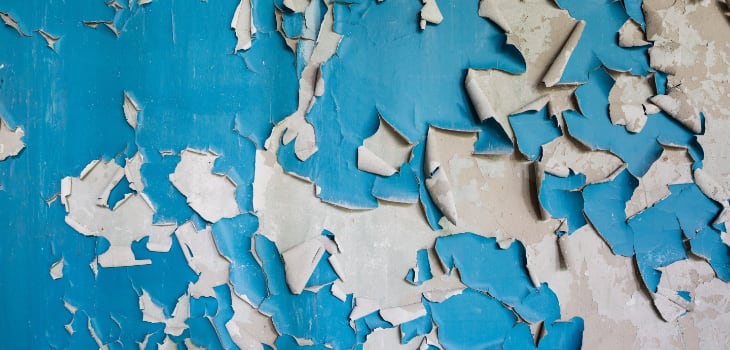
There are a variety of reasons peeling paint on walls occurs and it is important that the reason it occurs is discovered, as this is the crucial step in preventing it from happening again. This discovery could include taking off all the peeling paint and inspecting the surfaces for the root cause.
Why does paint peel?
One of the most important questions a quality painting contractor will address is, “why does paint peel off the wall?” This is important for a variety of reasons, including health, but also in preventing similar issues in the future.
Did you know falling paint chips can cause health problems, including eye injuries and lung damage? Where there are paint chips there exists paint dust, which can be an irritant, especially to the lungs. From old plaster ceilings to the ubiquitous drywall, peeling paint can become a serious issue in a short span of time, but most certainly becomes a problem with paint that was applied many years prior.
The simple answer to “why does paint peel?” is that it has lost adhesion to the surface on which it was applied. But the more difficult answer to come up with is why it lost adhesion, because there can be several answers to that, most notably of which is due to moisture problems. The quality of the paint can also impact its ability to adhere. The quality of the painter matters, too, as they need to use the right tools and techniques.
15 common reasons why paint may peel off the walls
Excessive exposure to water
Water has a huge impact on the ability of paint to adhere to surfaces. When water infiltrates, nothing good can come of it, as paint will quickly fail and peel.
High humidity and condensation
When the exposure to humidity is constant, condensation can build up and work its way between the surface and the paint, causing the paint to bulge up and eventually peel away.
Improper surface preparation
The best finishes begin with proper surface preparation. A completely clean, debris-free and dry surface is the only acceptable scenario, as anything less will result in peeling paint.
Dirty surface before painting
Even a small amount of dust can result in peeling paint, which is why professional painters make 100 percent sure they’ve removed any sign of dust, grease or oil from a surface.
Layering different paint types
Dissimilar paints can have poor reactions to each other, which is why you don’t cover previous coats of latex paint with oil or alkyd paint, as this will cause peeling.
Excessive layers of paint
Rarely will a paint job require more than two or three coats. “Less is more” in painting, as applying too many coats will negatively affect the ability of the paint to adhere properly.
Low-quality paints used
High-quality paints are flexible, durable and extremely adhesive. This is not the situation with bargain brands that use low-quality ingredients in their paints.
Incorrect paint or primer selection
Just as you use the right tool for the job, you need to use the right paint for the surface. Some primers and paints adhere better to specific surfaces than others.
Use of expired paint
Never use old paint, as it has lost its ability to adhere to surfaces and will most certainly peel away soon after being applied.
Poor painting methods
From using the right brushes and rollers to applying the paint with the correct thickness and coats, professional painters know exactly how to tackle each individual phase of a project. Peeling paint is a sign of a novice’s work.
Aged paint
When paint gets old, it becomes brittle – loses its flexibility and therefore becomes less durable. Time takes its toll and eventually, the old paint will peel away.
Extreme temperatures and sunlight
There is an optimal temperature for painting projects, and it is not during the hottest days of the summer of the frigid cold of winter. Furthermore, direct and intense sunlight will have a negative impact on the paint’s ability to properly adhere to surfaces.
Extremely dry environments
While excessive humidity is a problem, so too are arid environments. With the right amount of humidity in the air, paint cures/dries at the optimal rate and becomes far more durable.
Exposure to corrosive substances
While paint is made to withstand the household cleaners meant for wiping down surfaces, paint is not engineered to resist reactions to acids or other corrosive substances, which will cause it to fail and peel.
From proper surface prep and initial application to applying the right primers and paints, there are a variety of ways in which you can keep your paint from peeling. Partner with the right painting contractor and you’ll avoid the usual problems.
How to fix peeling paint?
Peeling paint is not an ideal situation, but armed with the knowledge of how to address it, the problem can be remedied quite easily. Fixing peeling paint on walls, trim, ceilings or any other surface will enhance the look and feel of any room or exterior surface. But before you can make these positive changes, you must first have an understanding of the necessary steps.
We’ve developed a quick and easy guide for helping you with your peeling paint issue. Follow each step carefully and you’ll take your worn, aesthetically unappealing surfaces to a fresh, new look that will last for years and years.
Fixing peeling paint
Scrape off peeling paint
Utilizing a paint scraper or a putty knife, gently remove the loose paint while being careful not to damage the underlying surface.
Sand the surface
Your surfaces need to be consistently level, so use sandpaper to smooth out the surface so that there are no raised areas.
Clean and dry
Before paint or primer can be applied, you’ll need to ensure that the surfaces are completely free of debris and also completely dry.
Prime and paint
Choose a primer that pairs well with the paint you’re using. When the primer is dry, use a compatible paint to cover your surfaces.
General tips for fixing bubbling, peeling paint and cracks in walls before painting
Addressing issues like bubbling, peeling paint, and cracks before undertaking a new painting project is crucial for ensuring a smooth and lasting finish. These common problems can significantly detract from the appearance and integrity of your walls, making pre-painting preparation key.
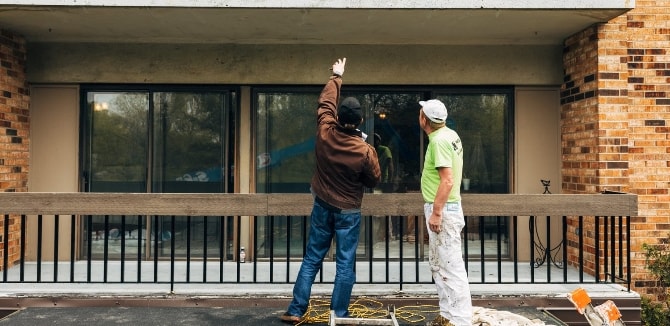
To tackle these challenges effectively, certain fundamental steps and considerations are essential. It is imperative to fix cracks in walls before painting. To get the most out of your new paint, you need to ensure that all the surfaces are completely repaired, smooth and ready for paint. Furthermore, fixing bubbled paint is also necessary, as new paint will not look attractive or last long if it is applied to bubbling/cracked paint.
One way to fix cracked paint on a wall is to gently scrape it off, then use sandpaper so the surface is completely level. After using sandpaper, you’ll have a fine dusting of old paint and substrate on the surface, which needs to be cleaned off. Take this time to look for any areas that need to be filled or require extra cleaning. This is all necessary to ensure your new paint will adhere correctly and not encounter premature bubbling, cracking or peeling.
Proper ventilation
Moisture can create a bad environment for paint, which is why proper ventilation is vital.
Quality materials
Choose quality paint from a trusted brand and you’ll be working with a durable paint that will last. Never use products, including painting tools, from bargain brands.
Match the paint
If you’re painting over latex paint, be sure to use latex and not a dissimilar product, such as oil paint or alkyd paint.
Proper filling techniques
The rule of thumb is that deep cracks require heavier filler. Use the recommended fillers for all small cracks and holes to create an even surface for paint.
Clean after sanding
Sanding creates a multitude of tiny dust particles that can settle on the surface, which needs to be completely removed before paint is applied so that it can properly adhere.
Test for lead
Lead is toxic, but prior to this discovery it was widely used in paint. If you live in an older home, be sure you test the old paint prior to removing it to ensure it doesn’t contain lead.
How to prevent paint bubbles, peeling and cracks
Knowing how to prevent paint bubbles is something all quality painting contractors are fully aware of. They know how to prevent paint cracking because they have years and years of experience working on all types of surfaces, from drywall to brick, stucco to cement and every other surface imaginable.
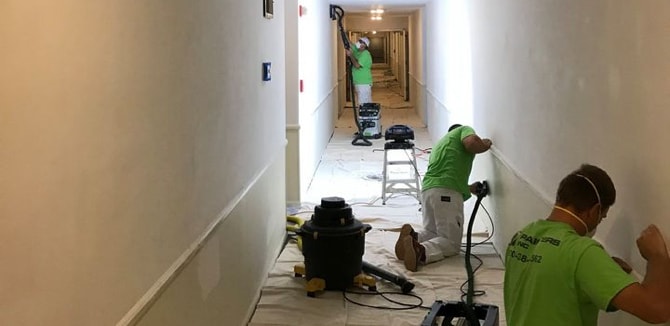
Working with a quality contractor, you will have someone in your corner with the knowledge of surface preparation, quality primer and paint, the best tools for the job and the experience/techniques necessary to exact a quality finish.
Thorough surface preparation
The only way the paint will adhere properly to a surface is if it is completely free of dust, old paint, grease and all other types of debris. Quality painters will take the necessary steps to completely prepare surfaces for paint.
Use high-quality primer and paint
There are specific brands of primer and paint on the market that painting contractors can trust and they go back to them frequently. When high-quality results are the expectation, using the best products is crucial.
Correct application techniques
Always follow the paint manufacturer’s guidelines when applying paint, but for flawless outcomes, apply the paint in even layers – not too thick or too thin.
Mind the environmental conditions
Avoid painting when the temperature is extreme, either too cold or too hot. Also, lower humidity is ideal, as too much humidity negatively impacts drying time.
Avoid moisture during painting
Be sure the surfaces are totally dry after they’ve been cleaned, as any amount of moisture will prevent proper adhesion.
Proper tools for application
From sprayers to brushes to rollers, only use the right tools from trusted manufacturers for the job. For more consistent and even application, use the right tool for each specific type of paint.
Timely repairs and maintenance
Prior to paint being applied, the surface must be repaired, cleaned and stabilized. Prep work could involve addressing various problem areas, such as cracks and holes in the surface.
Follow manufacturer’s instructions
Check to see how many numbers of coats the manufacturer recommends. You can also look for the estimated drying time between coats.
Consider hiring a professional painter
Novice painters turn out novice results, which could include bubbling, cracking and peeling paint. Your best option is to choose a professional painting contractor to do the work for you. They will have the knowledge of which paints will work on each specific type of surface, but they will also be skilled in prep work, application techniques and they will have all the necessary tools to get the job done with exceptional results. While it’s an investment, there is also value in the fact that when the job is completed by a professional, it will look great and last for a long, long time.
Now that you are informed about all the ways in which paint can fail and how to prevent that from happening, you’re ready to take on your painting project, hopefully with a skilled contractor who will turn out professional results.
Work with a professional painting contractor in the Chicago area
At Painters Inc., we’re a painting contractor serving the Chicago area. Our team is a dedicated, skilled and motivated group of professionals who are focused on quality results. From residential to commercial to industrial facilities, we can tackle any project no matter how large and complex or small and simple.
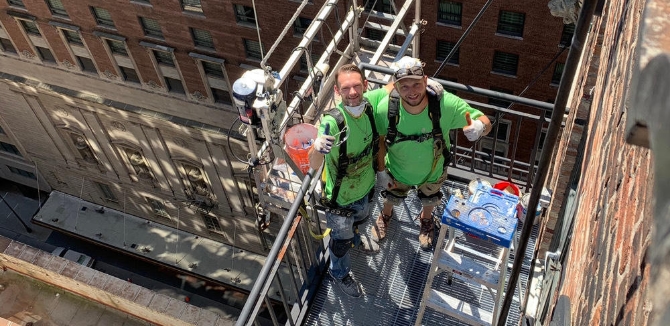
We work closely with our clients, communicating openly about each phase of the project and ensuring that the colors and finishes are exactly to their liking. From the first consultation to the final walk through, we’re open and transparent and 100 percent focused on customer satisfaction.
After nearly two decades serving customers in the Chicago area, we’re uniquely familiar with the architecture in the area and can handle painting jobs on all types of surfaces. We’re also licensed, insured and we offer a workmanship warranty. Contact us and let’s talk about your upcoming painting project.









